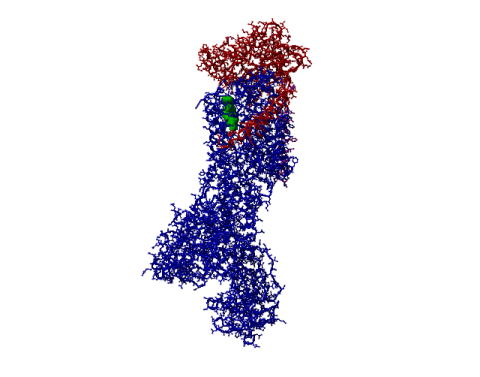Human health risk assessment
Code: MED-BMS60, study points: 3, period 3 / W44B (November: Thursday and Friday).


Coordinators:
Dr. P.T.J. Scheepers, Department for Health Evidence, Radboud Institute for Health Sciences, paul.scheepers@radboudumc.nl
Dr. J.B Koenderink, Department of Pharmacology and Toxicology, Radboud Institute of Molecular Life Sciences, jan.koenderink@radboudumc.nl
Code: MED-BMS60, study points: 3, period 3 / W44B (November: Thursday and Friday).


Coordinators:
Dr. P.T.J. Scheepers, Department for Health Evidence, Radboud Institute for Health Sciences, paul.scheepers@radboudumc.nl
Dr. J.B Koenderink, Department of Pharmacology and Toxicology, Radboud Institute of Molecular Life Sciences, jan.koenderink@radboudumc.nl
Description
Human health risk assessment (HRA) is generally applied to establish safe levels for all (marketed) products and for all other physical factors encountered in the living and working environment and known or suspected to cause adverse health effects. HRA is also applied to new/emerging risks. This course focuses on the generic method of HRA that is based on a paradigm that was originally established by the National Research Council (NRC, 1983). This approach evolved over the years to a complex procedure that is still being improved.
HRA is primarily applied for the purpose of prevention but can also be used in response to concerns from the public and to incidents and disasters. Recent examples include the health impact of the use of rubber granulate in synthetic turf pitch on soccer fields, of Schiphol airport on inhabitants (noise), of agricultural activities, such as in the Q-fever incident (biological agents), and of working with chromium among former military personnel. In addition, the HRA method can be used to assess the safety (and risks) of certain food products, medication, and consumer products, such as cosmetics.
Most of these determinants contribute to the etiology of multiple types of reversible and irreversible health endpoints including for example respiratory disease, cardiovascular disease, neurologic disease, adverse reproductive outcomes, and different types of cancer. Some environmental factors also interact with genetic traits, whereas others interact with e.g. life style factors or prescribed medication.
Well-known safety standards are established for e.g. noise, industrial chemicals, air quality, medication, and ionizing radiation (radon). In the Netherlands, most risk assessments are performed on a national level (RIVM and Health Council). In Europe, standards are set by EU authorities (EFSA, ECHA, EMA, SCOEL and SCHEER) and by international bodies (WHO). The use of human data is preferred, but such data are often not available and extrapolations from bioassay results need to be applied.
Human health risk assessment (HRA) is generally applied to establish safe levels for all (marketed) products and for all other physical factors encountered in the living and working environment and known or suspected to cause adverse health effects. HRA is also applied to new/emerging risks. This course focuses on the generic method of HRA that is based on a paradigm that was originally established by the National Research Council (NRC, 1983). This approach evolved over the years to a complex procedure that is still being improved.
HRA is primarily applied for the purpose of prevention but can also be used in response to concerns from the public and to incidents and disasters. Recent examples include the health impact of the use of rubber granulate in synthetic turf pitch on soccer fields, of Schiphol airport on inhabitants (noise), of agricultural activities, such as in the Q-fever incident (biological agents), and of working with chromium among former military personnel. In addition, the HRA method can be used to assess the safety (and risks) of certain food products, medication, and consumer products, such as cosmetics.
Most of these determinants contribute to the etiology of multiple types of reversible and irreversible health endpoints including for example respiratory disease, cardiovascular disease, neurologic disease, adverse reproductive outcomes, and different types of cancer. Some environmental factors also interact with genetic traits, whereas others interact with e.g. life style factors or prescribed medication.
Well-known safety standards are established for e.g. noise, industrial chemicals, air quality, medication, and ionizing radiation (radon). In the Netherlands, most risk assessments are performed on a national level (RIVM and Health Council). In Europe, standards are set by EU authorities (EFSA, ECHA, EMA, SCOEL and SCHEER) and by international bodies (WHO). The use of human data is preferred, but such data are often not available and extrapolations from bioassay results need to be applied.
Main learning goals
After completion of the course, students are able to
1. Correctly apply terminology in the risk assessment process.
2. Perform a hazard identification based on declared product information.
3. Acquire and select data suited to serve in a specific risk assessment setting.
4. Determine adverse health effects and determine a critical effect size.
5. Apply dose-response theory to different types of data (quantal and continuous) and different types of endpoints (threshold/non-threshold).
6. Identify uncertainties and deal with them appropriately by use of assessment factors.
7. Perform a complete quantitative human health risk assessment procedure for a single physical determinant and defend it in a scientific meeting with peers.
8. Communicate the results of risk assessment to policymakers.
After completion of the course, students are able to
1. Correctly apply terminology in the risk assessment process.
2. Perform a hazard identification based on declared product information.
3. Acquire and select data suited to serve in a specific risk assessment setting.
4. Determine adverse health effects and determine a critical effect size.
5. Apply dose-response theory to different types of data (quantal and continuous) and different types of endpoints (threshold/non-threshold).
6. Identify uncertainties and deal with them appropriately by use of assessment factors.
7. Perform a complete quantitative human health risk assessment procedure for a single physical determinant and defend it in a scientific meeting with peers.
8. Communicate the results of risk assessment to policymakers.
